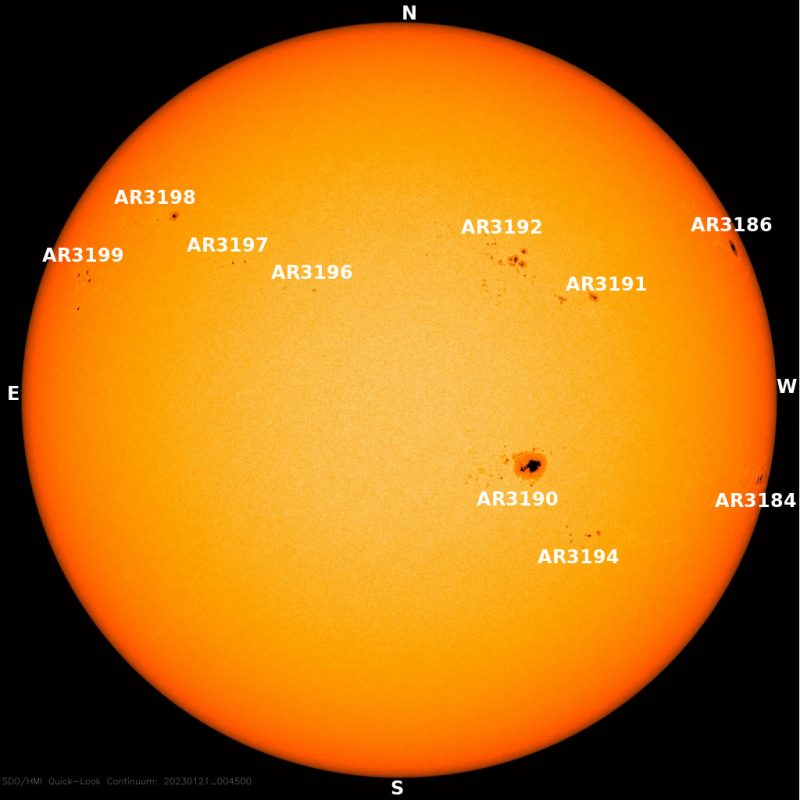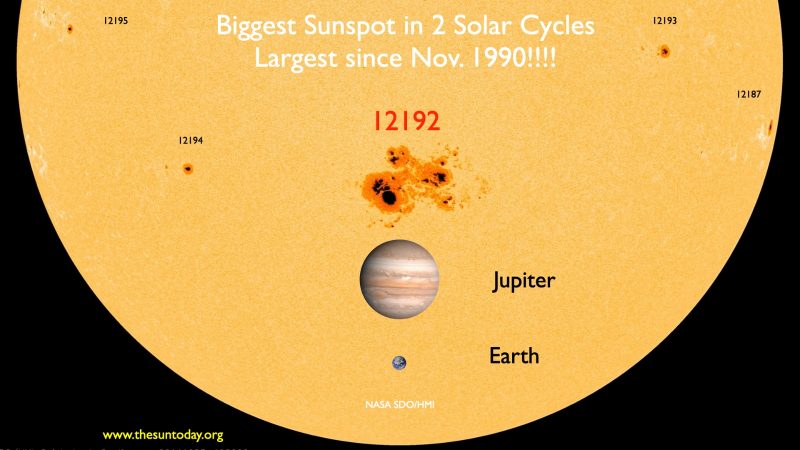
Giant sunspot visible this week!
A giant sunspot region – labeled AR 3190 – has been crossing the face of the sun this week. If you have a way to protect your eyes – eclipse glasses or solar binoculars – you can see it in your sky.
And a strange sight it is! It’s a dark blemish on the sun’s shining disk. What makes it?
What makes a giant sunspot?
Sunspots form from concentrations of magnetic fields inside the sun. They build up over time inside the sun and may become buoyant and rise to the surface. This buildup happens over the 11-year solar cycle. And the current cycle – Solar Cycle 25 – is now heading toward a peak in the middle of this decade. So we might see more giant sunspots in the years ahead!
Inside the sun, sunspots get twisted. It happens because the large-scale magnetic field basically runs north-south, but – being a big ball of gases – the sun rotates differentially, that is, it rotates faster near the equator than near the poles. As a result, the material that makes up the body of the sun – called solar plasma – drags the magnetic fields nearer to the equator than near the poles. So the fields become even more twisted close to the sun’s equator. And these twisted concentrations of magnetic fields float to the surface and poke through. Voila – a sunspot.
And giant sunspots? They stem from the fact that sunspots typically get bigger – and bigger – as we get closer to solar maximum (again, due in the middle of this decade).
How big can sunspots get?
This one currently visible on the sun is big! It’s as big as several Earths. But it’s not nearly as big as sunspots can get. The image below shows the largest sunspot group of the last solar cycle, Solar Cycle 24, which I reported on in 2014:

That sunspot was about 15 times the area of Earth. One of the largest ever recorded from 1947 was more than 36 times the size of Earth.
BIG SPOTS! How big can a sunspot get if a sunspot could get big? Earth is 169 MH (millionths of a Sun's visible hemisphere) Historic sunspot regions, AR9393(2001)=2440MH, AR10486(2003)=2610MH, AR12192(2014)=2700MH, Great spot of 1947=6100MH! The biggest spot today is only 170 MH. pic.twitter.com/JgskNlVEva
— Dr. C. Alex Young (@TheSunToday) May 18, 2022
Bottom line: A giant sunspot – AR 3190 – is crossing the face of the sun this week. It’ll soon disappear from view but is still visible today (January 21, 2023). What makes it?
The post What makes a giant sunspot? first appeared on EarthSky.
0 Commentaires